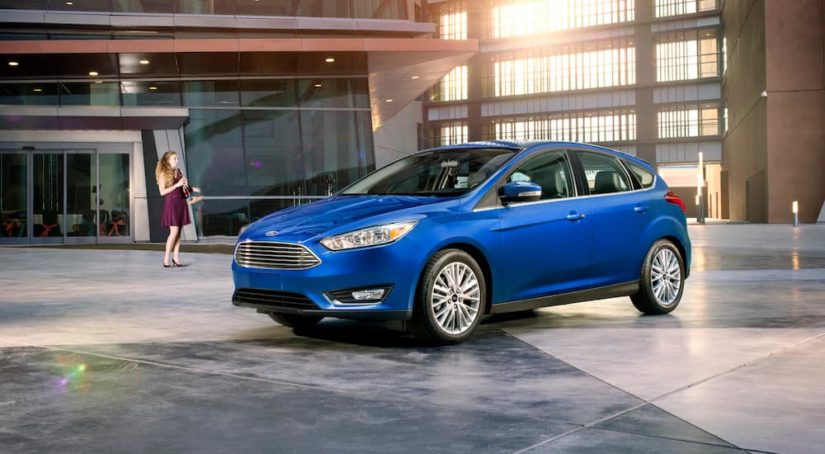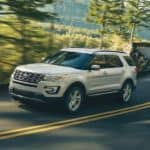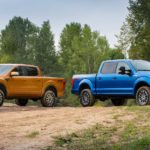As consumers, we’re not always privy to the decisions surrounding how manufacturers design their vehicle lineups. Many factors that contribute to an automaker’s long-term product strategy, like consumer trends and government regulations, can help us make educated guesses, but some moves are just vexing. Take Ford’s decision to discontinue the popular Focus. After all, if you visit a used Ford Focus dealer, you’ll find that demand is still fierce.
Why is such a popular car no longer part of the lineup? It boils down to resources. Companies like Ford are directing the majority of their capital toward developing EVs and advancing battery technology, and they are cutting back in less popular segments to compensate. Because of this, production of the Ford Focus, once available in both a sedan and hatchback body style, ceased after the 2018 model year, despite consistently positive reviews by automotive journalists.
Luckily, buyers seeking a more traditional sedan or hatchback body style can reunite with the popular Focus in a robust used car market that encompasses newer and lower mileage certified pre-owned (CPO) models. Which Focus is right for you? We’ll review the most recent (and last) model year here, as well as share the basics about certified pre-owned inventory.
It’s not impossible to find a high-quality Ford Focus, especially if you’re working with a certified Ford dealer. In its final year, the Focus offered a trim range of four different options, each delivering unique buyer benefits. The Focus remains an affordable compact alternative to the crossover body style that some buyers find too bulky for everyday driving, but if you want one in your driveway, the time is now.
2018 Ford Focus Overview
The 2018 Ford Focus offered an entry price point of just $18,825, making it the perfect choice for first-time buyers or anyone on a tight budget. It was known for delivering outstanding fuel economy and responsive handling in two distinct body styles: a four-door sedan and a sporty hatchback. For those who wanted it, a manual transmission was even available on certain trims.
With a combined fuel economy rating of up to 40 MPG on the highway, the Focus thrilled drivers looking for low ownership costs and longer driving ranges. Four different engines – a standard 2.0-liter 4-cylinder, a 1.0-liter 3-cylinder turbo, a 2.0-liter 4-cylinder turbo, and a 2.3-liter turbo – represented a wide range of horsepower outputs. The minimum rating was just 123 hp, while the max was a whopping 350 hp, an astonishing power range for such a small vehicle.
Lower-end trims are equipped with a small 4.2-inch center-mounted screen, but upgraded models and higher trims come with a large 8-inch infotainment touchscreen with optional navigation, as well as a 10-speaker Sony premium audio system. The system also includes Apple CarPlay and Android Auto connectivity, and it runs on Ford’s responsive and intuitive SYNC 3 operating system.
Which trim do we recommend? When new, a fully-loaded performance Focus RS had an MSRP of upwards of $40,000. They’re still in high demand today, especially now that the Focus is discontinued, so they’ll fetch a pretty premium price. We suggest investigating other trims, like the mid-range SE or SEL. These are more mainstream trims with greater availability, and therefore will represent a better overall value.
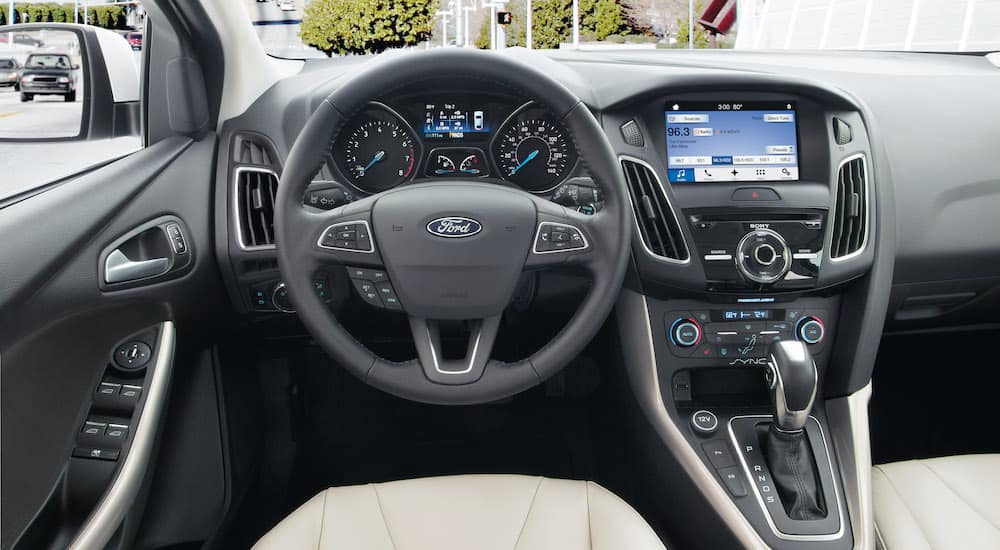
Certified Pre-Owned Ford Vehicles
When you’re in the market for a used car, whether it’s a Focus or something else, it’s always a good idea to get acquainted with certified pre-owned programs. Ford’s CPO program, called Ford Blue Advantage, consists of vehicles that have passed a rigorous multi-point inspection. There are two quality levels: Gold Certified and Blue Certified.
Gold Certified models must be six years old or newer and have fewer than 80,000 miles on the odometer. All Gold Certified Ford pre-owned vehicles come with a 12-month/12,000-mile limited warranty, a 7-year/100,000-mile powertrain warranty, and 24/7 roadside assistance. Gold Certified Ford vehicles are the next best alternative to buying a new Ford.
Blue Certified models must be ten years old or newer, have fewer than 120,000 miles, and pass a comprehensive 139-point inspection (Gold Certified vehicles are subjected to a more intensive 171-point inspection). Blue Certified vehicles come with a 90-day/4,000-mile limited warranty and 24/7 roadside assistance but no powertrain warranty.
Gold or Blue Certified Focus models are considered the cream-of-the-crop. They’re thoroughly inspected in a factory-backed process and, in the case of Gold level vehicles, are covered by warranties that are similar to those found on new models. Certified Ford vehicles are only available at Ford dealerships, but they’re the lowest-risk and closest-to-new used vehicles on the market.
Used Car Buying Tips
If you’re not sure a CPO vehicle is in your budget, there are still plenty of high-quality Focus models circulating in the used car marketplace. As with any used car purchase, we always recommend buying from a certified dealer. The reasons are many, but primarily, when you buy from a dealer, you enter a longer-term relationship for service and maintenance. It’s also far less likely that you’ll leave with a subpar-quality car.
Nearly every Ford dealer now offers real-time access to their new and used inventory online. The easiest and most efficient way to shop is to google your local Ford dealer and scroll through their inventory. If you can’t find the exact Ford Focus you’re seeking, don’t hesitate to call the sales department. Most dealers are happy to locate a vehicle with the features and options you want.
The other benefit to buying from a dealer is you can trade-in your existing car without the hassle associated with trying to sell it privately. A common misconception is that dealers won’t give you a fair value on your trade. In fact, quality used cars are always in high demand. We say let go of any preconceived notions and give your Ford dealer an opportunity to value your trade.
Lastly, when you buy from a dealer, the in-house finance team can handle your loan quickly and efficiently. It saves the hassle of securing financing from another outside lender, adding time and complexity to the process. Large volume Ford dealers have access to dozens of lenders, so their rates are as competitive – and sometimes even better than – traditional banks or credit unions.
The alternative is wading into the murky waters of unvetted online classified ad sites, private sellers, and confusing DIY paperwork. Sure, you might save a few hundred dollars, but what you take on in risk and extra headaches isn’t really worth the potential savings. If you end up with a lemon, that savings will evaporate quickly.
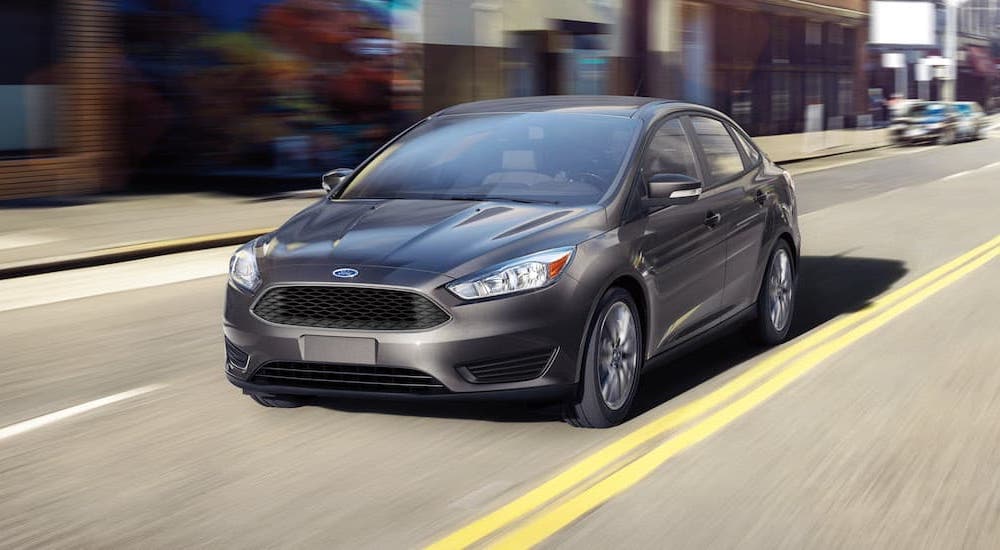
The Ford Focus – Discontinued, But Not Gone
We will surely miss the Ford Focus, but as automakers clamor for market share in the burgeoning EV segment, focusing on shared platforms and overlapping components is the business model that makes the most sense. It’s undeniable that crossovers and SUVs have overtaken sedans, coupes, and hatchbacks as the most popular body style.
If your heart is set on a Focus, we recommend getting in touch with your Ford dealer. They’ll have the inside track on the best pre-owned vehicles in your area at a fair price, and with an on-site service center staffed by factory-trained technicians, you’ll be building an important relationship that will help keep your used Focus running great for years to come.
